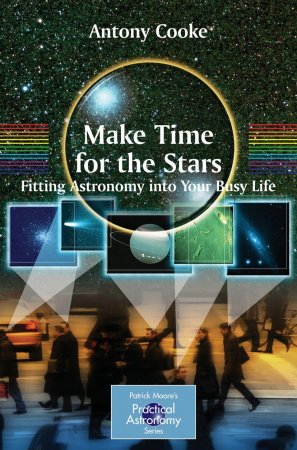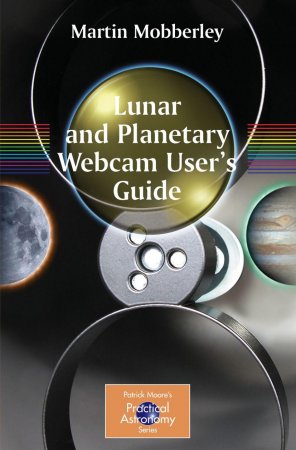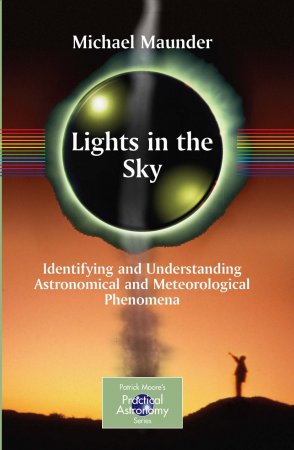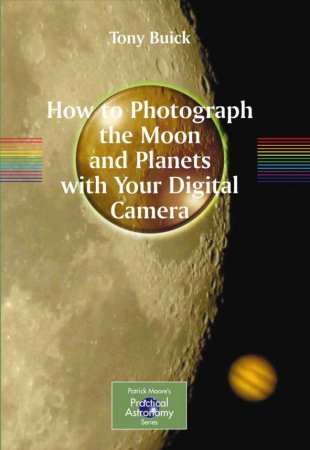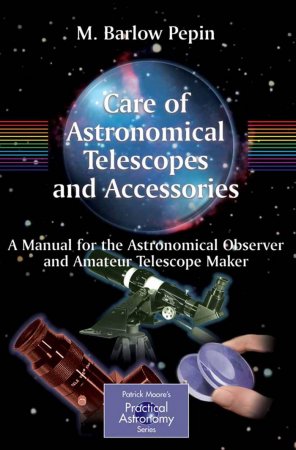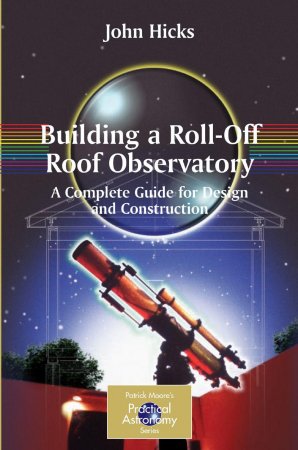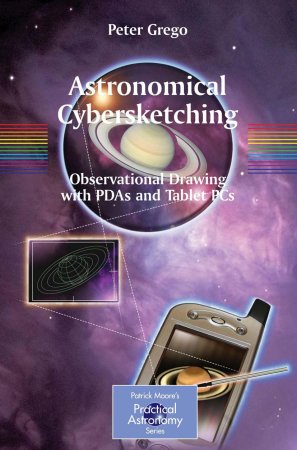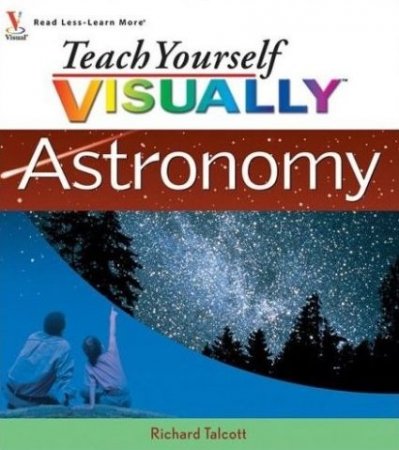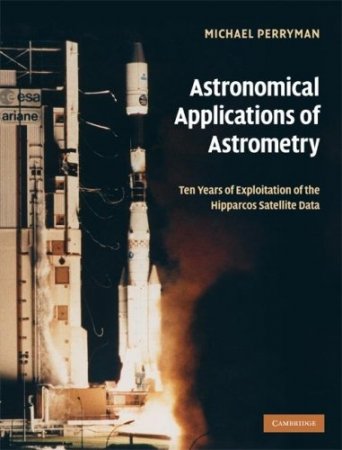НавигацияАрхив новостейСтатистика |
Make Time for the Stars: Fitting Astronomy into Your Busy LifeMany amateur astronomers are short of time. A full-time career usually takes up most waking hours, and there very often simply isn’t time for leisurely observing sessions, at least a few hours’ sleep being something of an imperative during the week. Fortunately, modern technological advances such as computer-controlled telescopes equipped with GPS, north-seeking and level detection, have made setting up a telescope much quicker. Today’s imaging systems enable time-pressed astronomers to take excellent astrophotographs of many objects without the hours-long exposures that used to be a feature of this aspect of astronomy. This book explains what to attempt in a short timescale (and what not to), and how to use today’s top-value commercially-made equipment to get the most astronomy out of the least time. Lunar and Planetary Webcam User's GuideIn the last few years, cheap webcams have revolutionized amateur astronomy by providing a very inexpensive alternative to purpose-made astronomical CCD cameras, which use refrigerated imaging chips and are thus extremely expensive. Webcams are capable of more advanced work than ‘normal’ digital cameras because their simple construction makes it easy to remove the webcam’s lens, allowing it to be interfaced directly to a telescope. Using a webcam is not difficult but most amateur astronomers who have tried to do this do not achieve the finest results, despite the webcam’s potential. There are numerous imaging and image processing tricks and techniques, and all of them are needed to get the best results. Lights in the Sky: Identifying and Understanding Astronomical and Meteorological PhenomenaMany lights and other objects in the sky go unrecognised, or at least are little understood by those observing them. Such things range from the commonplace like rainbows and meteors, to the distinctly unusual like the green flash and ball lightning. And there is still a residuum of objects that remain unidentified by the watcher – classed generally as ‘UFOs’, a description which today has connotations of the mysterious, even of extraterrestrial visitors. How to Photograph the Moon and Planets with Your Digital CameraSince the advent of astronomical CCD imaging it has been possible for amateurs to produce images of a quality that was attainable only by universities and professional observatories just a decade ago. However, astronomical CCD cameras are still very expensive, and technology has now progressed so that digital cameras – the kind you use on holiday – are more than capable of photographing the brighter astronomical objects, notably the Moon and major planets. Digital Astrophotography: The State of the ArtThe CCD (Charge-Coupled Device) has revolutionised optical astronomy during the past 20 years, and specialised astronomical CCD cameras are now even more affordable, colour is standard, and they provide spectacular results. Digital Astrophotography: The State of the Art, provides some examples of the best images, and gives readers hints and tips about how to get the best out of this extraordinary technology. Care of Astronomical Telescopes and Accessories: A Manual for the Astronomical Observer and Amateur Telescope MakerCommercially-made astronomical telescopes are better and less expensive than ever before, and their optical and mechanical performance can be superb. When a good-quality telescope fails to perform as well as it might, the reason is quite probably that it needs a little care and attention! Here is a complete guide for anyone who wants to understand more than just the basics of astronomical telescopes and accessories, and how to maintain them in the peak of condition. The latest on safely adjusting, cleaning, and maintaining your equipment is combined with thoroughly updated methods from the old masters. Here, too, are details of choosing new and used optics and accessories, along with enhancements you can make to extend their versatility and useful lifetime. This book is for you. Really. Looking after an astronomical telescope isn’t only for the experts - although there some things that only an expert should attempt - and every serious amateur astronomer will find invaluable information here, gleaned from Barlow Pepin’s many years? Experience working with optical instruments. Building a Roll-Off Roof Observatory: A Complete Guide for Design and ConstructionThis series of books is written for serious newcomers to amateur astronomy, for undergraduate students who are studying astronomy - but not as a first subject - and for interested general readers who want to study astronomy in more depth than is provided by the general run of "popular" astronomy book that is found in the general trade bookshops. All the books in the series are as far as possible non- mathematical. They require only a modest background knowledge of science on the part of the reader, but provide material that goes into the various topics in considerable depth and detail. Practical Astronomy thus bridges the gap between the many introductory books and specialized technical publications. Astronomical Cybersketching: Observational Drawing with PDAs and Tablet PCsThis book is truly unique. It is a book that has become necessary because of advancing computer technology. It outlines the techniques involved in making observational sketches and more detailed ‘scientific’ drawings of a wide variety of astronomical subjects using modern digital equipment; primarily PDAs and tablet PCs. Choosing hardware and software is discussed at the beginning, followed by the techniques involved in amateur astronomers producing finished drawings. Completing and enhancing these drawings at the desktop PC is also covered. Teach Yourself VISUALLY AstronomyНочное небо завораживает людей драматическими лунными затмениями или блестящими кометами. Эта книга, содержащая множество красивых цветных фотографий, расскажет вам о всём, что вам необходимо знать для получения максимального удовольствия от астрономии, начиная с выбора телескопа и заканчивая распознаванием созвездий и планет. Книга служит практическим руководством по наблюдению за звёздами, планетами, лунами и галактиками; отслеживанию метеоров, комет и затмений; выбору инструментов для наблюдения; фотографированию неба. Содержательные звёздные карты, диаграммы и графики вдыхают в небо жизнь! Astronomical Applications of Astrometry: Ten Years of Exploitation of the Hipparcos Satellite DataСпутник "Hipparcos", созданный и запущенный Европейским космическим агентством в 1989 году, был первой космической миссией, посвящённой астрометрии - разделу астрономии, главной задачей которого является проведение высокоточных измерений координат, расстояний и собственных движений небесных тел с целью их дальнейшей каталогизации, а также определение географических координат и точного времени. Книга содержит сведения, полученные в последние 10 лет с помощью этого спутника, а также подробный обзор каталогов "Hipparcos" и "Tycho", их приложения и обновления. В конце каждой главы даются обширные ссылки на соответствующую литературу. |
ПопулярноеКалендарь
ОпросОцените дизайн сайта
Немного рекламы |
|||||||||||||||||||||||||||||||||||||||||||||||||
